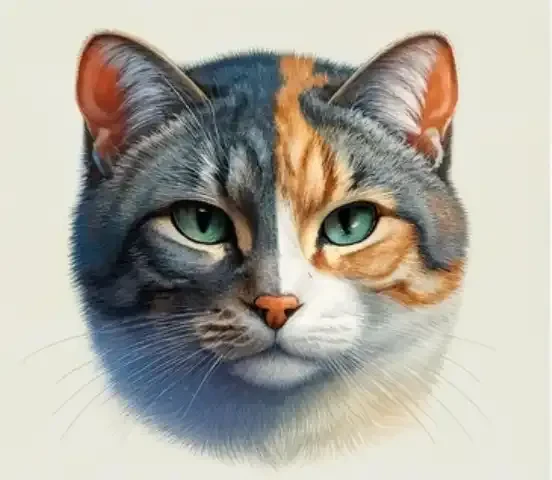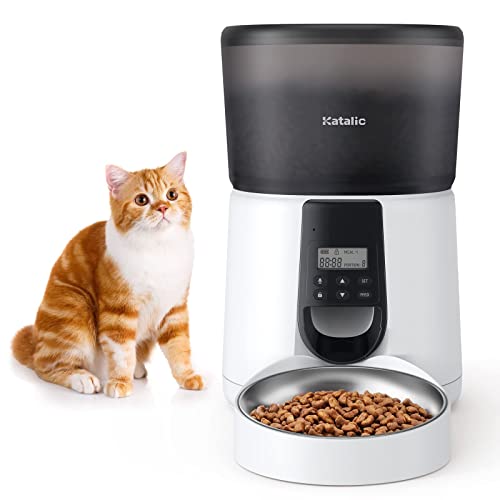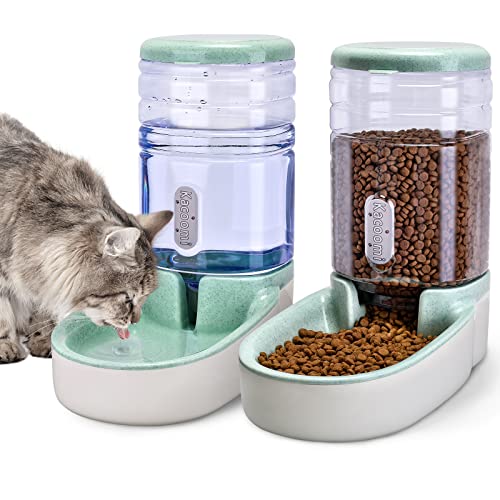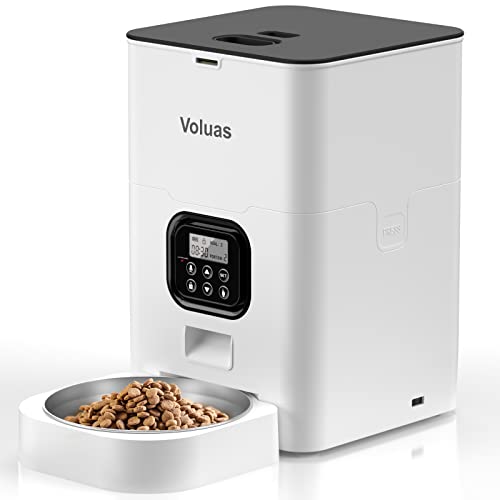Have you ever felt like your cat is a furry enigma? One minute they’re purring contentedly on your lap, the next, seemingly without warning, there’s a nip or a swat. It’s a common frustration for cat owners: we love our feline companions, but sometimes understanding what they’re really trying to tell us feels like trying to decipher an ancient, forgotten language. The truth is, cats are constantly communicating, just not primarily with spoken words. Forget trying to interpret every meow – the key to truly “speaking cat” lies in understanding their nuanced and fascinating body language.
Learning to decode your cat’s non-verbal cues isn't just an intellectual exercise; it's the foundation for a happier, more harmonious relationship with your feline friend. Misunderstandings can lead to stress for both you and your cat, potentially triggering unwanted behaviors or even aggression. By becoming fluent in “cat speak,” you can anticipate their needs, respond appropriately to their emotional states, and strengthen the unique bond you share. Think of it as unlocking a secret language – one that reveals the rich inner world of your cat and allows you to truly “hear” what they’ve been saying all along.
Let's start with one of the most expressive parts of a cat’s anatomy: their tail. Imagine the tail as your cat’s personal barometer, constantly broadcasting their mood and intentions. An upright tail, held high and proud, is often a sign of a happy, confident cat. It’s their way of saying “Hello, world! I feel good!” You might see this tail posture when they greet you at the door, approach their food bowl, or are confidently exploring their territory. Sometimes, you’ll even notice subtle variations in this upright tail – a slight curve at the tip can indicate playfulness or excitement, adding an extra layer of nuance to this already positive signal.
However, a tail that suddenly puffs up, resembling a bottle brush, sends a very different message. This is a clear warning flag: “Back off!” A puffed-up tail, often accompanied by arched back and flattened ears, signals fear, aggression, or defensiveness. Your cat is trying to appear larger and more intimidating to ward off a perceived threat. Think of the classic Halloween cat image – that’s body language in its most dramatic form! This posture might appear if they are startled by a loud noise, encounter a strange animal, or feel cornered.
Conversely, a tail tucked low between the legs or wrapped tightly around the body is a sign of fear, anxiety, or submission. This is a cat feeling insecure and uncomfortable in their environment. They are trying to make themselves appear smaller and less threatening. You might see this posture in a new environment, when meeting unfamiliar people or animals, or during stressful situations like a vet visit.
Then there’s the twitching or flicking tail. This can be a bit trickier to interpret as it can signal both excitement and irritation, depending on the context. A tail that’s twitching or rapidly flicking might indicate excitement and focus, often seen when a cat is in hunting mode, intently watching a bird outside the window, or engaged in playful stalking. However, a more forceful, agitated twitch or flick, especially if the tail is swishing rapidly back and forth, can signal irritation or agitation. You’ll need to consider other body language cues and the situation to differentiate between these two possibilities.
Finally, a swishing tail, moving slowly or more rapidly from side to side, also carries a range of meanings. A slow, gentle swish can sometimes indicate focus and concentration, perhaps as they are contemplating a toy or observing their surroundings. However, a more rapid and forceful swishing tail is often a clear sign of annoyance, irritation, or even potential aggression, particularly if the swishing is quite forceful and accompanied by other tense body language. Imagine a cat whose tail is thrashing back and forth – that's not a happy camper!
Moving upwards, let's consider the ears – your cat’s incredibly sensitive and expressive auditory receivers. Just as their tails act as visual signals, their ears provide another rich layer of communication. Ears pointing forward, like little radar dishes, indicate an alert, interested, and happy cat. They are paying attention to something in their environment, actively listening and engaged. This is often seen during playtime, when they are anticipating food, or exploring a new space with curiosity.
Ears turned to the side or slightly back often signal a relaxed and comfortable cat. They might be feeling at ease in their environment, perhaps drowsy or simply content. Interestingly, even in this relaxed state, their ears might still be subtly swiveling, indicating they are still passively listening to their surroundings, even if they appear to be resting.
Flattened ears, pinned tightly back against the head, are a serious warning sign. This posture signals fear, aggression, anxiety, or stress. It's a defensive posture, a clear indication that your cat is feeling threatened and uncomfortable. Flattened ears are often accompanied by other stress signals like dilated pupils, hissing, or a crouched posture. This is definitely a time to give your cat space and try to identify and remove the source of their distress.
Swiveling ears, constantly moving and rotating, reveal a cat actively engaged with their auditory environment. They are listening intently, trying to pinpoint the source of sounds and gather information about what’s happening around them. This constant ear movement highlights their incredible hearing acuity and their constant awareness of their surroundings.
Now, let’s turn our attention to the eyes – often called the “windows to the soul,” and for cats, this couldn’t be truer. The pupils, the black centers of their eyes, can dilate and constrict, conveying a surprising range of emotions. Dilated pupils, large and dark, can indicate a variety of states, including excitement, playfulness, fear, or anxiety. Context is absolutely crucial when interpreting dilated pupils. Are they playing with a toy and their pupils are dilated? That's likely excitement. Are they cowering in a corner with dilated pupils? That's more likely fear. It’s also important to note that certain medical conditions can also cause pupil dilation, so always consider the overall context and consult a vet if you are concerned.
Constricted pupils, appearing as narrow slits, often indicate a relaxed and content cat. They might be feeling sleepy, comfortable, or simply at ease. However, constricted pupils can also sometimes indicate a focused, potentially aggressive state, particularly when combined with other tense body language and a direct stare. Again, context and other cues are vital for accurate interpretation.
One of the most endearing eye signals is the slow blink, often referred to as a cat “kiss.” This gentle, deliberate closing and opening of the eyes is a powerful signal of affection, trust, and contentment. When a cat slow blinks at you, they are essentially saying, “I trust you, I feel comfortable and safe with you.” It’s considered a friendly gesture, and you can reciprocate this “cat kiss” by slowly blinking back at them, strengthening your bond.
A direct stare from a cat can be interpreted in different ways depending on the context and the cats involved. In cat-to-cat interactions, a prolonged, direct stare can be perceived as a challenge or threat, potentially leading to conflict. However, in human-cat interaction, the meaning is more nuanced. A playful stare, perhaps accompanied by relaxed body language and playful movements, can be an invitation to interact or play. But a tense, unwavering stare, combined with other signs of tension, could be a sign of discomfort or even potential aggression.
Half-closed or partially closed eyes are a hallmark of a relaxed, sleepy, and content cat. They are feeling safe and comfortable enough to let their guard down, drifting towards sleep. This is a sign that they are in a secure and comfortable environment, feeling no need to be fully alert to potential threats.
Finally, let’s consider overall body posture and movement, the complete picture that ties all these individual cues together. A stretched-out and relaxed posture, perhaps lounging on their side or back, indicates a comfortable cat who feels safe and secure in their environment. They are in a state of contentment and relaxation, with no apparent worries.
A crouched posture, low to the ground, often signals fear, anxiety, or a hunting/stalking mode. In fearful or anxious situations, they are trying to make themselves smaller and less visible. In hunting mode, it’s a posture of stealth and preparation for pouncing. You'll need to consider other cues to differentiate between these two possibilities.
Rolling onto their back, exposing their belly, is a behavior that often confuses people. While in dogs, belly exposure is usually a clear invitation for belly rubs, in cats, it’s more nuanced. It can certainly be a sign of contentment and a playful invitation, indicating they feel safe and secure enough to be vulnerable. However, it’s not always a request for belly rubs! Some cats tolerate or even enjoy belly rubs, but others find it overstimulating or even threatening. Pay attention to other cues – are their ears forward and relaxed? Are they purring? Or are their ears flattened and their tail twitching? Respect their boundaries and don’t assume belly exposure automatically equals “belly rubs welcome.”
Puffed-up fur and an arched back, as mentioned earlier in relation to the tail, is a whole-body signal of fear, aggression, and defensiveness. The cat is trying to appear as large and intimidating as possible to deter a perceived threat. This dramatic posture is a clear warning to give them space.
Rubbing against your legs or objects is a common and multifaceted cat behavior. It’s primarily a form of scent marking – cats have scent glands on their head, cheeks, and flanks, and rubbing deposits their scent, claiming territory and marking objects and people as familiar and safe. It’s also a way of showing affection, seeking attention, and mixing scents within a multi-cat household, creating a unified group scent.
While body language is paramount, it’s impossible to ignore the vocalizations that cats also use to communicate. Although they rely more heavily on non-verbal cues, their vocal repertoire is also worth understanding, especially when considered alongside their body language. Purring is perhaps the most well-known cat vocalization. While it’s often associated with contentment and pleasure, it’s important to understand that purring is not always a sign of happiness. Cats also purr when they are stressed, injured, or in pain, possibly as a self-soothing mechanism. Context is key! A purring cat who is relaxed, eyes half-closed, and kneading contentedly is likely a happy cat. A purring cat who is crouched, ears flattened, and breathing rapidly might be purring due to stress or pain.
Meowing is a vocalization that cats have largely developed to communicate with humans. Adult cats rarely meow at each other. Meowing is often attention-seeking, a way to greet you, or to demand something – food, playtime, or simply your presence. Meows vary in tone and length, and you can often learn to differentiate between a demanding “feed me!” meow and a friendly “hello!” meow.
Hissing and growling are unmistakable warning signals, clear indicators of fear, aggression, and discomfort. These vocalizations are used to warn off perceived threats and should be taken seriously. A hissing or growling cat is telling you to back away and give them space.
Chirping or trilling sounds are softer, bird-like vocalizations, often expressing excitement, particularly when spotting prey, like birds or insects. They can also be used as a friendly greeting, a softer, gentler way of saying hello.
Ultimately, understanding cat body language is about putting all the pieces together. No single cue should be interpreted in isolation. Think of it like a puzzle – you need to consider a cluster of signals to get the full picture. Look at their tail, ears, eyes, posture, and even listen to their vocalizations, all in combination. Context is also paramount. What’s happening around the cat? Is there a new person, a strange noise, a change in routine? The situation dramatically influences the meaning of their body language. And remember, just like humans, cats are individuals. Some cats are naturally more expressive than others, and some may have slightly different baseline behaviors. The best way to become fluent in your cat’s language is to become a keen observer. Spend time simply watching them, noticing the subtle shifts in their posture, the flick of their tail, the expression in their eyes. Learn their unique communication style, and you’ll be amazed at how much you can “hear” just by watching.
It's also crucial to be aware of common misinterpretations of cat body language. One frequent pitfall is anthropomorphism – projecting human emotions and intentions onto cats. While we naturally empathize with our pets, it’s important to remember that cats are not furry little humans and their motivations and emotional expressions differ from ours. Avoid assuming they are feeling exactly what you would feel in a similar situation.
Another common myth is “purring always means happy.” As we’ve discussed, purring is far more complex than just a happiness indicator. Debunking this myth is crucial to truly understanding your cat. Stress purring is a real phenomenon, and relying solely on purring to gauge their emotional state can lead to misinterpretations.
Ignoring warning signs is another mistake that can lead to negative interactions. Cats often give subtle warning signals before escalating to hissing, swatting, or biting. Learning to recognize early signs of fear, anxiety, or irritation – flattened ears, twitching tail, tense posture – is essential for preventing unpleasant encounters and respecting your cat’s boundaries.
Finally, avoid treating all “meows” the same. While we may not fully understand the nuances of cat vocalizations, recognizing that meows vary in tone and meaning is important. A plaintive, high-pitched meow likely signifies a different need than a short, chirpy meow greeting you at the door.
Understanding your cat’s body language is an ongoing journey of observation and learning. By paying attention to their tails, ears, eyes, posture, and vocalizations, and considering the context and individual personality, you can unlock the secrets of “cat speak.” This deeper understanding will not only strengthen the bond you share with your feline companion but also allow you to better meet their needs, reduce stress, and create a truly harmonious home for both of you. So, start observing, start learning, and prepare to be amazed by the wealth of communication happening silently, right under your nose, in the subtle language of your cat. Embrace the rewarding experience of becoming your cat’s best listener, and you'll find your relationship deepening in ways you never imagined.







